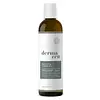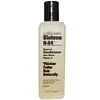What's inside
What's inside
 Key Ingredients
Key Ingredients

 Benefits
Benefits

 Concerns
Concerns

 Ingredients Side-by-side
Ingredients Side-by-side

Water
Skin ConditioningCetearyl Alcohol
EmollientGlycerin
HumectantCaprylic/Capric Triglyceride
MaskingSqualane
EmollientStearamidopropyl Dimethylamine Lactate
Cetrimonium Chloride
AntimicrobialInulin
Skin ConditioningGuar Hydroxypropyltrimonium Chloride
Skin ConditioningPanthenol
Skin ConditioningAlthaea Officinalis Root Extract
Skin ConditioningBambusa Vulgaris Shoot Extract
AntioxidantCucumis Sativus Extract
Skin ConditioningUrtica Dioica Root Extract
Skin ConditioningBenzyl Alcohol
PerfumingRosmarinus Officinalis Leaf Oil
MaskingHydrolyzed Rice Protein
Skin ConditioningMentha Piperita Oil
MaskingTocopheryl Acetate
AntioxidantPhytic Acid
Water, Cetearyl Alcohol, Glycerin, Caprylic/Capric Triglyceride, Squalane, Stearamidopropyl Dimethylamine Lactate, Cetrimonium Chloride, Inulin, Guar Hydroxypropyltrimonium Chloride, Panthenol, Althaea Officinalis Root Extract, Bambusa Vulgaris Shoot Extract, Cucumis Sativus Extract, Urtica Dioica Root Extract, Benzyl Alcohol, Rosmarinus Officinalis Leaf Oil, Hydrolyzed Rice Protein, Mentha Piperita Oil, Tocopheryl Acetate, Phytic Acid
Water
Skin ConditioningAloe Barbadensis Leaf Juice
Skin ConditioningCetearyl Alcohol
EmollientPolysorbate 60
EmulsifyingStearalkonium Chloride
PreservativeBiotin
AntiseborrhoeicPalmitoyl Tripeptide-38
Skin ConditioningCitric Acid
BufferingUrtica Dioica Leaf Extract
Skin ConditioningSalvia Officinalis Leaf Extract
CleansingRosmarinus Officinalis Leaf Extract
AntimicrobialBetula Alba Leaf Extract
AstringentAchillea Millefolium Extract
CleansingBixa Orellana Seed Extract
MaskingEquisetum Arvense Extract
AstringentPanthenol
Skin ConditioningHydrolyzed Collagen
EmollientCysteine Hcl
AntioxidantRetinyl Palmitate
Skin ConditioningGlycerin
HumectantPotassium Sorbate
PreservativeSodium Benzoate
MaskingParfum
MaskingWater, Aloe Barbadensis Leaf Juice, Cetearyl Alcohol, Polysorbate 60, Stearalkonium Chloride, Biotin, Palmitoyl Tripeptide-38, Citric Acid, Urtica Dioica Leaf Extract, Salvia Officinalis Leaf Extract, Rosmarinus Officinalis Leaf Extract, Betula Alba Leaf Extract, Achillea Millefolium Extract, Bixa Orellana Seed Extract, Equisetum Arvense Extract, Panthenol, Hydrolyzed Collagen, Cysteine Hcl, Retinyl Palmitate, Glycerin, Potassium Sorbate, Sodium Benzoate, Parfum
Ingredients Explained
These ingredients are found in both products.
Ingredients higher up in an ingredient list are typically present in a larger amount.
Cetearyl alcohol is a mixture of two fatty alcohols: cetyl alcohol and stearyl alcohol. It is mainly used as an emulsifier. Emulsifiers help prevent the separation of oils and products. Due to its composition, it can also be used to thicken a product or help create foam.
Cetearyl alcohol is an emollient. Emollients help soothe and hydrate the skin by trapping moisture.
Studies show Cetearyl alcohol is non-toxic and non-irritating. The FDA allows products labeled "alcohol-free" to have fatty alcohols.
This ingredient is usually derived from plant oils such as palm, vegetable, or coconut oils. There is debate on whether this ingredient will cause acne.
Due to the fatty acid base, this ingredient may not be Malassezia folliculitis safe.
Learn more about Cetearyl AlcoholGlycerin is already naturally found in your skin. It helps moisturize and protect your skin.
A study from 2016 found glycerin to be more effective as a humectant than AHAs and hyaluronic acid.
As a humectant, it helps the skin stay hydrated by pulling moisture to your skin. The low molecular weight of glycerin allows it to pull moisture into the deeper layers of your skin.
Hydrated skin improves your skin barrier; Your skin barrier helps protect against irritants and bacteria.
Glycerin has also been found to have antimicrobial and antiviral properties. Due to these properties, glycerin is often used in wound and burn treatments.
In cosmetics, glycerin is usually derived from plants such as soybean or palm. However, it can also be sourced from animals, such as tallow or animal fat.
This ingredient is organic, colorless, odorless, and non-toxic.
Glycerin is the name for this ingredient in American English. British English uses Glycerol/Glycerine.
Learn more about GlycerinPanthenol is a common ingredient that helps hydrate and soothe the skin. It is found naturally in our skin and hair.
There are two forms of panthenol: D and L.
D-panthenol is also known as dexpanthenol. Most cosmetics use dexpanthenol or a mixture of D and L-panthenol.
Panthenol is famous due to its ability to go deeper into the skin's layers. Using this ingredient has numerous pros (and no cons):
Like hyaluronic acid, panthenol is a humectant. Humectants are able to bind and hold large amounts of water to keep skin hydrated.
This ingredient works well for wound healing. It works by increasing tissue in the wound and helps close open wounds.
Once oxidized, panthenol converts to pantothenic acid. Panthothenic acid is found in all living cells.
This ingredient is also referred to as pro-vitamin B5.
Learn more about PanthenolWater. It's the most common cosmetic ingredient of all. You'll usually see it at the top of ingredient lists, meaning that it makes up the largest part of the product.
So why is it so popular? Water most often acts as a solvent - this means that it helps dissolve other ingredients into the formulation.
You'll also recognize water as that liquid we all need to stay alive. If you see this, drink a glass of water. Stay hydrated!
Learn more about Water